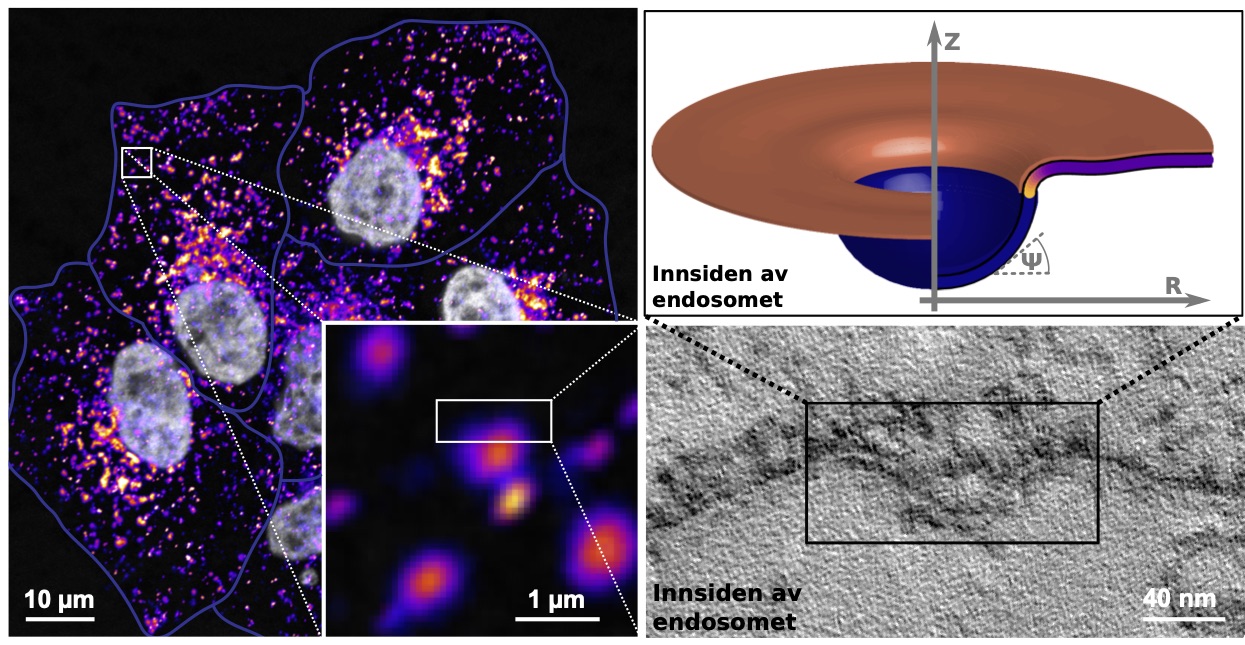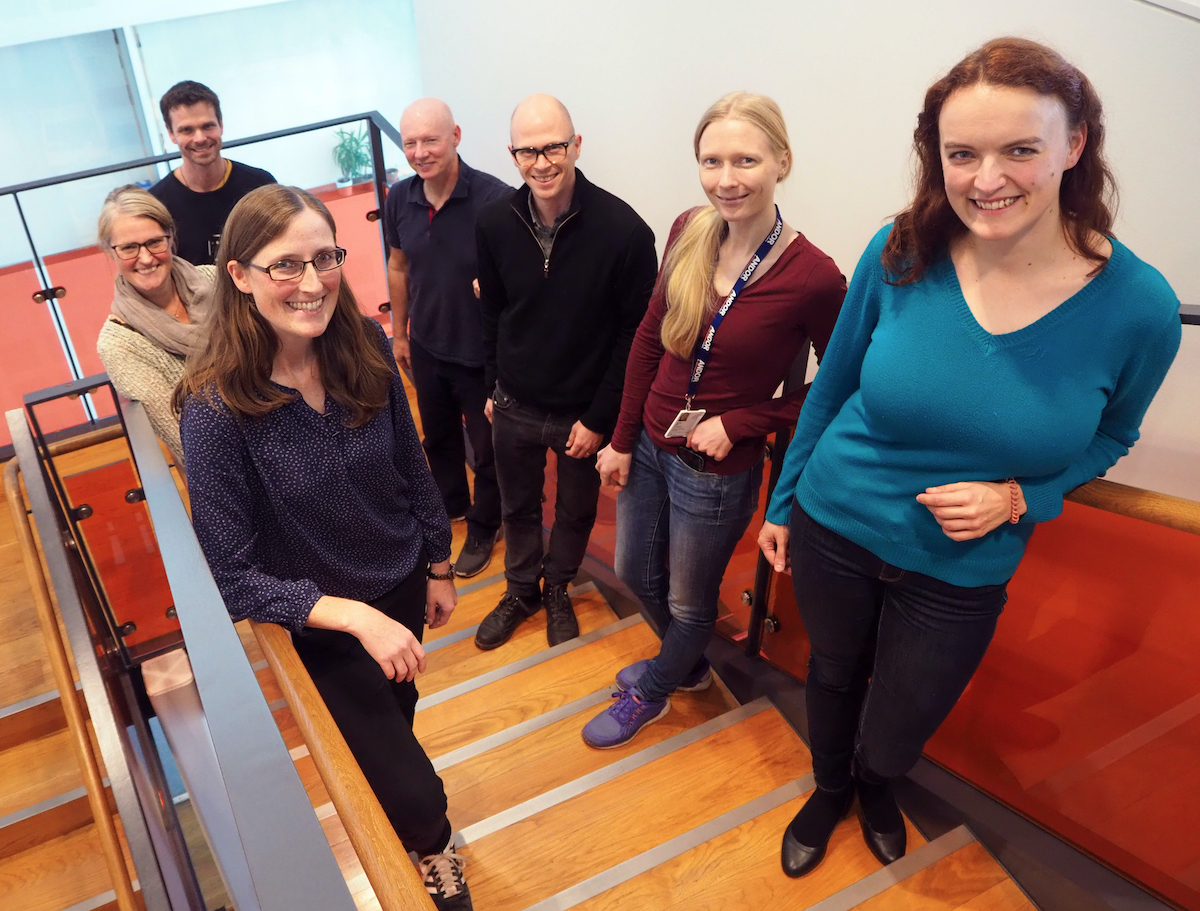Cell biologists and biophysicists join forces to bend biological membranes
Biological membranes deform to generate a vesicle within a vesicle. This phenomenon, called intraluminal vesicle formation, is a crucial step in the cellular clearance of obsolete transmembrane proteins, such as for example growth factor receptors. When this mechanism fails, cells can divide uncontrolled and cancer can arise.
The endosomal sorting complex required for transport (ESCRT) is a multi-protein complex that is required for intraluminal vesicle formation. Exactly how this protein complex facilitates the bending of the endosome membrane has been unknown.
Now, an interdisciplinary team involving the groups of Harald Stenmark, Institute for Cancer research and Centre for Cancer Cell Reprogramming and Andreas Carlson from the Department of Mathematics, UiO, has unraveled how the ESCRT machinery bends membranes.
By combining cell biological analyses and mathematical modelling, the teams could show that the membrane bends due to the crowding of the ESCRT proteins and transmembrane cargo and that this process can occur without the requirement for energy in the form of ATP hydrolysis.

From the Stenmark team, cell biologists Eva Wenzel and Camilla Raiborg provided quantitative fluorescence microscopy data of endosomes, which were filmed in living cells. In collaboration with the Unit of Cellular Electron Microscopy (UCEM), headed by Andreas Brech, electron microscopy data allowed measurements on sizes and shapes of forming intraluminal vesicles. These combined microscopic biological data were used by biophysicist Susanne Liese in Andreas Carlson’s group to establish a mathematical model based on energy minimization of elastic surfaces in conjunction with attached protein complexes. The Stenmark team could then verify the predictions from the mathematical model experimentally by using cell biological methods and quantitative electron microscopy. An article summarizing the findings was published 2nd of November in the prestigious journal PNAS (Proceedings of the National Academy of Sciences of the United States of America).

Maria Wenzel, Camilla Raiborg, Sebastian W. Schultz, Harald Stenmark, Andreas Carlson,
Ingrid Kjos and Susanne Liese. Andreas Brech and Rossana Rojas Molina are missing from the
picture. Foto: Bjarne Røsjø.
| Team Stenmark (OUS, ICR, CanCell): Cell biologists: Eva Wenzel and Camilla Raiborg Electron microscopy experts: Ingrid Kjos, Sebastian Schultz, Andreas Brech |
| Team Carlson (UiO): Biophysicists Susanne Liese and Rossana Rojas Molina |
Links:
The PNAS research article:
Protein crowding mediates membrane remodeling in upstream ESCRT-induced formation of intraluminal vesicles
Susanne Liese, Eva Maria Wenzel, Ingrid Kjos, Rossana Rojas Molina, Sebastian W. Schultz, Andreas Brech, Harald Stenmark, Camilla Raiborg, and Andreas Carlson
Proc Natl Acad Sci USA first published November 2, 2020. https://doi.org/10.1073/pnas.2014228117
Home page of Harald Stemark's Cellular membrane dynamics research group
